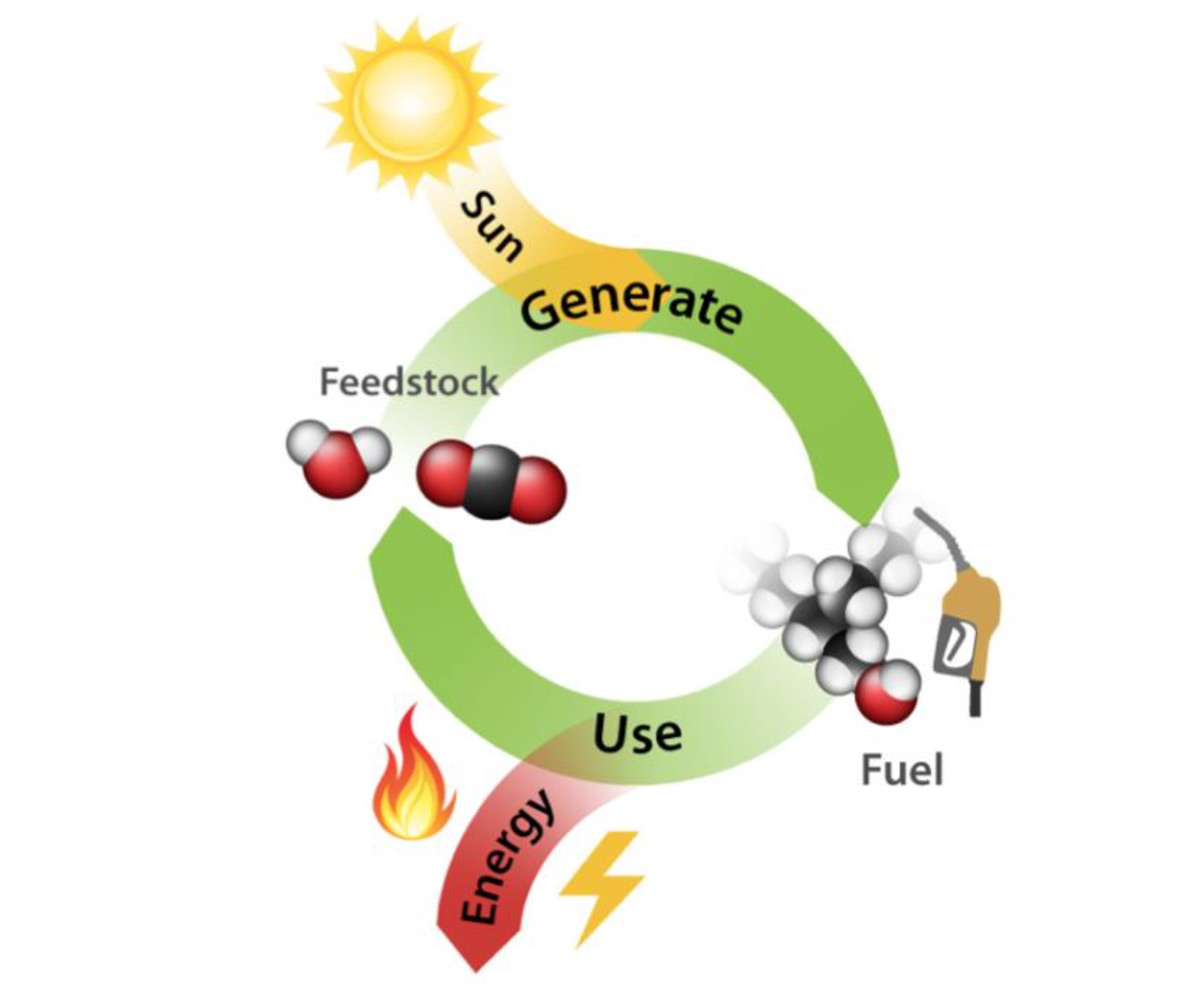Renewable Fuels & Chemicals
Fossil fuels are non-renewable and highly polluting; yet, we are largely dependent on them to produce fuels and chemicals for manufacturing that underpin our society. Alternatively, their synthesis using renewable energy and waste CO2 emissions offers a path to their sustainable manufacturing, circular economies, and closing the carbon cycle: in sum, making the materials we need using contamination and renewables.

What?
Renewable fuel technologies include liquid and gaseous fuels synthesized from Earth-abundant substances (water, carbon dioxide and nitrogen) using renewable energy. This gives rise to a multitude of energy vectors based on hydrogen, hydrocarbons (methanol, formic acid) and nitrogen compounds (ammonia, hydrazine), commonly labelled as Solar Fuels whenever sunlight acts as the main energy source.
Why?
The advantages of renewable fuels and chemicals include their:
- Compatibility with existing transportation methods and fuel infrastructures;
- Potential for long-term storage of surplus renewable electricity;
- Complementarity with Carbon Capture, Use and Storage (CCUS) technologies;
- Potential to synthesize important petrochemical precursors (such as ethylene oxide).
How?
Researchers at ICFO are developing solar fuels by three different strategies: (1) developing novel ways to capture CO2 contamination using renewables; (2) Using electrochemical cells (ECs), which powered by renewable electrons (e.g. from solar and wind) drive CO2 conversion; and (3), developing alternative routes that employ photoelectrochemical cells (PECs), which use embedded photovoltaics to harvest sunlight, to drive the reaction in a standalone fashion.
Who?
In the CO2 Mitigation Accelerated by Photons group, led by Prof. Dr. F. Pelayo García de Arquer, researchers are developing novel catalytic nanomaterials, reactor designs and operando spectroscopy monitoring tools to up-scale CO2 conversion and other electrochemical processes. The Organic Nanostructured Photovoltaics group, led by Prof. Dr. Jordi Martorell, is developing tandem structures that integrate photovoltaics and CO2 conversion with optimal light harvesting efficiency.
Solar energy can be used to convert CO2 and water into fuels and chemicals which we depend on, but potentially in a completely sustainable manner.

Image depicting the circularity attributes of solar fuels. Link to source.